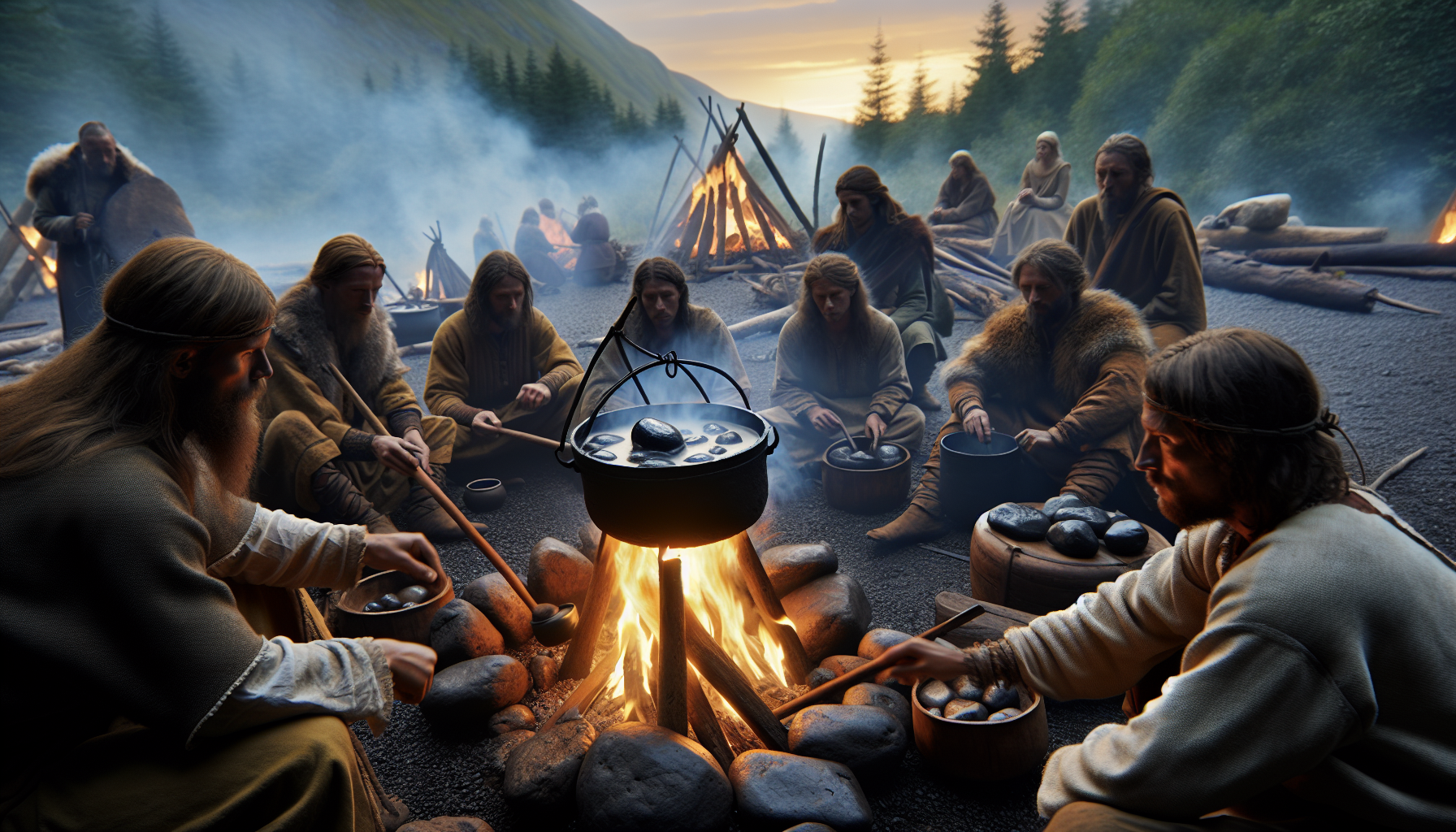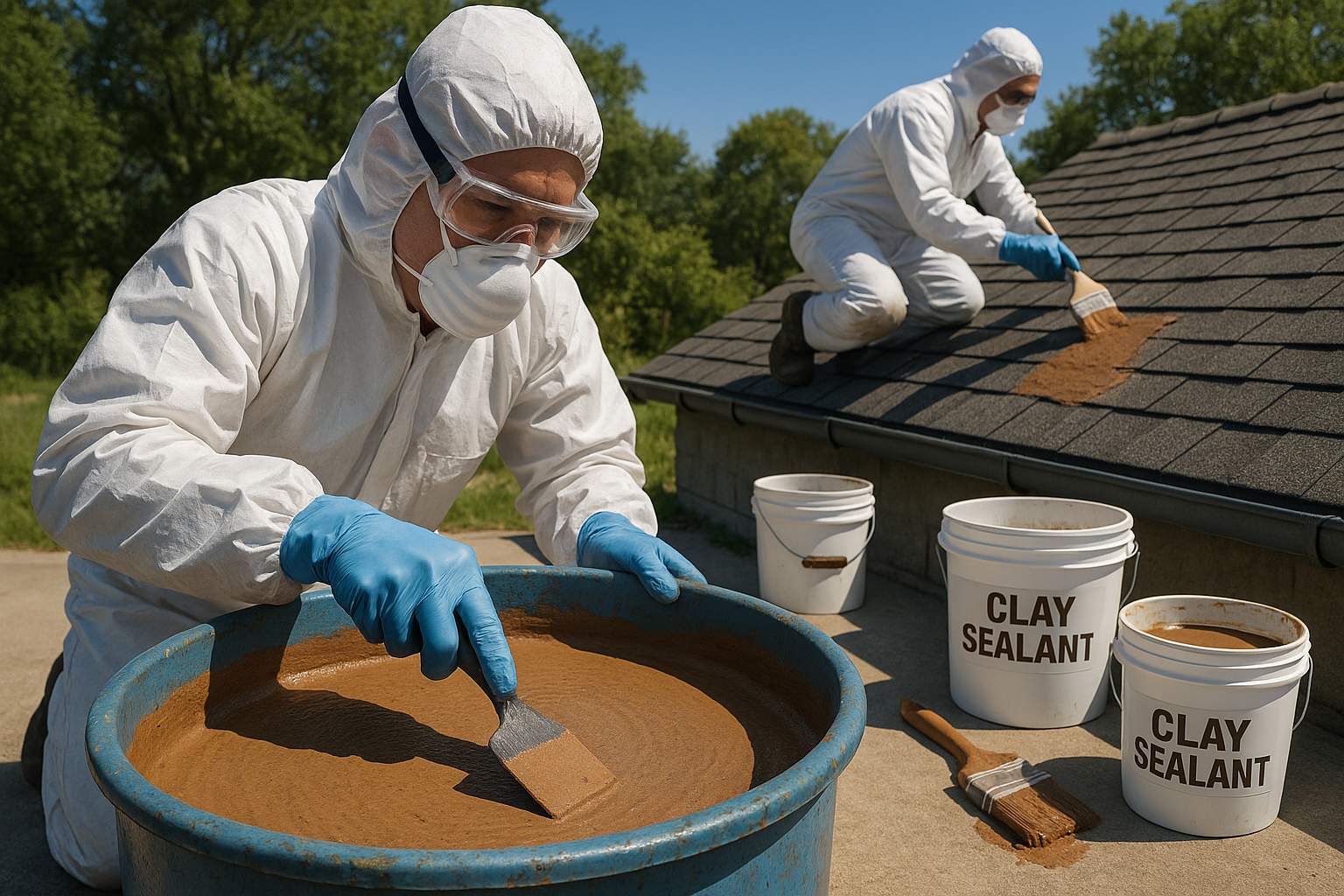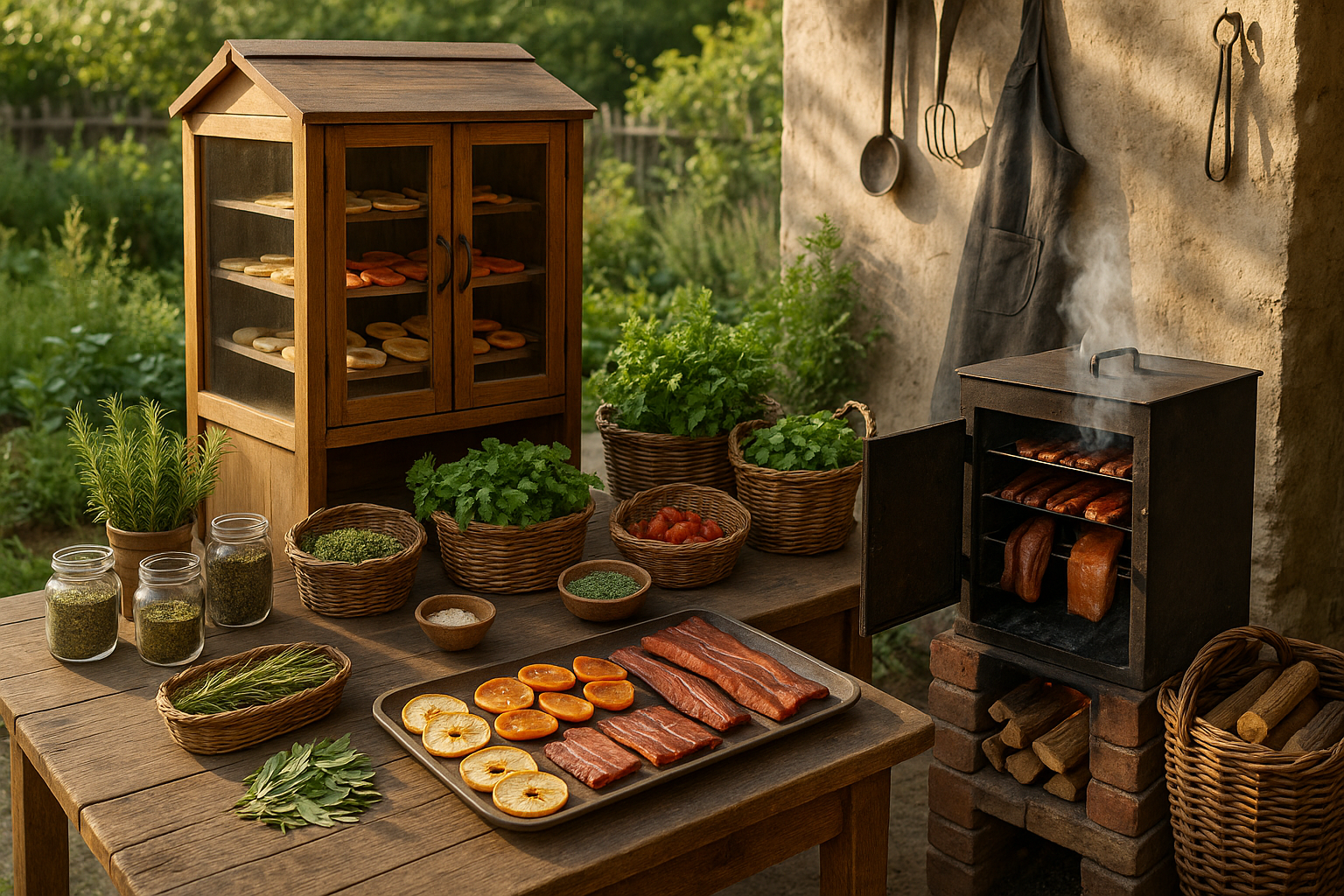In the annals of human history, few innovations have been as transformative as the development of cooking. It’s a practice that not only nourishes the body but also fuels the soul, binding communities and cultures through shared traditions and flavors. Yet, long before the advent of modern cookware, before the gleaming pots and pans of today’s kitchens, ancient societies devised ingenious methods to harness the elements and cook their meals. One such remarkable technique is stone boiling, a method that predates metal utensils and speaks volumes about human ingenuity and adaptability. In this exploration, we will delve deep into the fascinating world of stone boiling—a culinary art form that empowered ancient civilizations to thrive in a metal-free world.
Imagine a time when the earth was the only source of raw materials, where metal was a distant dream yet to be discovered. The people of these times were no less innovative than we are today; they simply worked with what they had. Stone boiling is a testament to this resourcefulness. By heating stones in a fire and then transferring them into a liquid-filled container, our ancestors could bring water to a boil, cook food, and even create medicinal concoctions. This method not only highlights the resourcefulness of ancient peoples but also their deep understanding of their natural environment and its potential. As we embark on this journey through time, we’ll uncover the secrets of how these early societies mastered the art of stone boiling and its impact on their daily lives.
In this exploration, we will first dive into the origins of stone boiling, tracing back to the archaeological evidence that sheds light on when and where this practice began. By examining the remnants of ancient hearths and charred stones, we can piece together a picture of our ancestors’ lives and how this technique evolved across different cultures. From the icy terrains of prehistoric Europe to the sun-baked lands of ancient America, stone boiling was a universal solution to the challenge of cooking without metal. Each region adapted the technique to its specific environment, using locally available stones and materials, which we will explore in detail.
Following this historical overview, we will shift our focus to the cultural significance of stone boiling. This method was more than just a means of cooking; it was embedded in the social and spiritual fabric of ancient communities. Through stone boiling, food preparation became a communal activity, a shared experience that brought people together. We’ll explore how various societies incorporated stone boiling into their rituals and traditions, turning a practical necessity into a cultural cornerstone. Whether it was preparing a feast for a special occasion or concocting a healing brew, stone boiling was often accompanied by rituals and symbolism that underscored its importance.
Finally, we will consider the legacy of stone boiling in today’s culinary world and its potential applications in modern cooking. As we become more conscious of sustainable practices and seek to reconnect with traditional methods, stone boiling offers a bridge between the past and the present. We will explore contemporary chefs and food enthusiasts who are reviving this ancient art, incorporating it into their cooking practices, and what this means for the future of gastronomy. By examining this ancient technique through a modern lens, we can gain insights into sustainable cooking practices and a renewed appreciation for the resourcefulness of our ancestors. So, prepare to embark on a captivating journey through time, where stones whisper secrets of the past, and boiling pots tell stories of human innovation and resilience. 🏺🔥
The Origins of Stone Boiling: An Ancient Culinary Technique
Stone boiling is an ancient cooking method that dates back thousands of years, serving as a fundamental technique in the culinary practices of numerous prehistoric societies. The process involves heating stones until they are hot enough to transfer heat into a liquid, typically water, to cook food without the direct use of fire or metal pots. This method was crucial for early humans, especially in regions where metal resources were scarce or non-existent. Stone boiling allowed for the cooking of various foods, including meats, roots, and grains, expanding the culinary possibilities available to early societies.
Archaeological evidence suggests that stone boiling was employed by various cultures across the globe. From the Native American tribes in North America to the ancient tribes of Europe and Asia, this technique played a vital role in the development of cooking and food preservation. The widespread use of stone boiling highlights its effectiveness and adaptability across different environments and available resources.
The process of stone boiling typically involved the use of porous rocks, such as basalt or sandstone, which could withstand repeated heating and cooling without cracking. These stones were placed in a fire until they reached the desired temperature, after which they were carefully placed into a vessel containing water or other liquids. The heat from the stones would gradually transfer to the liquid, bringing it to a boil and cooking the food within. This method allowed for the preparation of nutritious and varied meals, contributing to the health and survival of ancient societies.
The Mechanics of Stone Boiling: How It Works
The success of stone boiling as a cooking method lies in its simple yet effective mechanics. By understanding the properties of heat transfer and the materials used, ancient societies were able to harness this technique for their culinary needs. The key components of stone boiling include the selection of appropriate stones, the construction of suitable containers, and the management of fire to achieve the necessary temperatures.
The choice of stones was crucial to the stone boiling process. Stones needed to be durable, heat-resistant, and non-toxic, ensuring that they could be used repeatedly without degrading or contaminating the food. Basalt and sandstone were commonly used due to their ability to absorb and retain heat effectively. These stones were also abundant in many regions, making them an accessible resource for prehistoric communities.
The containers used for stone boiling varied based on the available materials and cultural practices of each society. In some regions, natural depressions in rocks served as makeshift pots, while others constructed vessels from materials like clay, animal hides, or woven plant fibers. These containers needed to be able to hold both the liquid and the heated stones without leaking or breaking under the thermal stress. The ingenuity of early humans in crafting these containers showcases their understanding of material properties and their ability to adapt to environmental constraints.
Stone Boiling in Different Cultures
The practice of stone boiling was not limited to a single geographic area but was a widespread technique employed by various cultures. Each society adapted the method to suit their local resources and culinary traditions, resulting in a rich tapestry of cooking practices centered around this simple yet effective technique.
In North America, stone boiling was particularly prevalent among Native American tribes. The use of heated stones allowed these communities to prepare a variety of foods, from stews to plant-based dishes, using natural materials readily available in their environment. The process also facilitated the preparation of acorns, a common food source, by leaching out the tannins and making them palatable and nutritious.
Similarly, in Europe, stone boiling was an integral part of prehistoric cooking practices. Evidence from archaeological sites indicates that this method was used to process grains and other plant-based foods. The versatility of stone boiling allowed these ancient Europeans to create diverse and balanced diets, even in the absence of metal cooking implements.
Table: Comparison of Stone Boiling Across Cultures
| Region | Materials Used | Common Foods Prepared |
|---|---|---|
| North America | Basalt, sandstone, clay pots | Acorns, stews, plant-based dishes |
| Europe | Granite, clay, woven baskets | Grains, vegetables, broths |
| Asia | Sandstone, animal hides, bamboo | Rice, roots, fish |
Check out this fascinating video that explores the ancient techniques of stone boiling.
Reviving Stone Boiling in Modern Times
In recent years, there has been a resurgence of interest in traditional cooking methods, including stone boiling. Modern enthusiasts and historians are rediscovering the benefits and unique flavors imparted by this ancient technique. The renewed interest has sparked a cultural movement to preserve and document these age-old practices, ensuring they are not lost to time.
Stone boiling offers a sustainable and environmentally friendly cooking method, as it relies on natural materials and does not require the use of manufactured pots or pans. This aspect has garnered attention in today’s eco-conscious society, where reducing carbon footprints and minimizing waste are increasingly prioritized. By utilizing locally sourced stones and organic containers, individuals can experience the culinary traditions of their ancestors while promoting sustainable practices.
Moreover, stone boiling provides a unique sensory experience that connects individuals to the past. The slow, methodical process of heating stones and carefully managing the fire requires patience and attention to detail, inviting practitioners to engage with their food in a meaningful way. This tactile connection to the cooking process fosters a deeper appreciation for the ingredients and techniques used, enriching the overall dining experience.
Benefits of Stone Boiling
- Environmentally friendly and sustainable cooking method.
- Preservation of cultural heritage and traditional culinary practices.
- Enhanced flavors and textures in cooked foods.
- Connection to historical and ancestral cooking techniques.
To dive deeper into the fascinating world of stone boiling and see it in action, watch this video on traditional stone boiling techniques.
Embracing the Ancient: A Call to Action
As we continue to explore the rich history of stone boiling and its impact on ancient societies, there is an opportunity for modern cooks and historians to embrace and preserve these traditional practices. By integrating stone boiling into contemporary cooking, we can honor the ingenuity and resilience of our ancestors while enjoying the unique flavors and experiences this method provides.
For those interested in experimenting with stone boiling, it is important to start by sourcing the right materials and practicing the technique safely. Many enthusiasts recommend beginning with smaller-scale projects, such as boiling small batches of food or experimenting with different types of stones to understand their heat retention properties. As confidence and skill levels increase, more complex and larger-scale dishes can be attempted, offering a rewarding culinary journey.
In conclusion, stone boiling is more than just a cooking method; it is a testament to human innovation and adaptability. By embracing this ancient technique, we not only connect with our past but also enrich our culinary experiences in the present. Whether you are a seasoned cook or a curious history enthusiast, stone boiling offers a unique opportunity to explore the flavors and traditions of ancient societies. 🌿🔥

Conclusion
In conclusion, the exploration of stone boiling as a culinary technique showcases the ingenuity and adaptability of ancient societies, who managed to master cooking without the luxury of metal tools. Throughout this article, we’ve delved into the various aspects that make stone boiling not just a fascinating historical practice, but also a testament to human creativity and resourcefulness. By examining the origins, methods, and cultural significance of stone boiling, we’ve gained insights into how our ancestors overcame environmental and technological limitations to create complex and nutritious meals.
One of the primary points discussed was the process itself—how heated stones were carefully placed into liquid-filled containers to bring the contents to a boil. This method not only highlights a clever use of available resources but also underscores the universal human drive to innovate with whatever materials are at hand. The variety of stones used and the intricate knowledge required to prevent container breakage or food contamination further emphasizes the sophistication of these early chefs.
Additionally, we’ve looked at the cultural contexts in which stone boiling was practiced, noting its prevalence in different societies across the globe. From the indigenous tribes of North America to early European communities, stone boiling has played a crucial role in daily life, communal gatherings, and even ceremonial practices. This wide geographical spread indicates a shared human experience, where diverse cultures converged on similar solutions to the universal challenge of preparing food.
The nutritional advantages of stone boiling were also highlighted. Unlike other ancient cooking methods, such as roasting over an open flame, stone boiling allows for the preservation of nutrients and flavors, offering a wholesome dining experience. This method has likely contributed to the dietary success of our ancestors, providing them with the sustenance needed to thrive in various environments.
Reflecting on these aspects, it becomes clear that the significance of stone boiling extends beyond mere historical curiosity. In a modern context, it encourages us to appreciate the roots of culinary innovation and the ways in which human beings have continually adapted to their surroundings. Moreover, it offers valuable lessons for contemporary cooks and historians alike, prompting a reevaluation of current cooking practices and the potential benefits of incorporating ancient techniques into today’s kitchens.
To fully grasp the impact and legacy of stone boiling, it’s essential to continue exploring this topic through research and experimentation. Engaging with the archaeological record, as well as experimenting with stone boiling techniques, can yield further insights and deepen our understanding of this remarkable practice. For those interested in further exploration, reputable sources such as National Geographic, Smithsonian Magazine, and academic publications on anthropology and archaeology provide extensive information and research findings on ancient cooking methods and their cultural implications.
As we conclude this discussion, let’s recognize the enduring relevance of stone boiling as a symbol of human ingenuity and adaptability. Whether you’re a historian, a culinary enthusiast, or simply someone curious about the past, there’s much to learn and appreciate about this ancient practice. I encourage you to share your thoughts and discoveries, engage in discussions with others, and perhaps even try your hand at stone boiling yourself. By doing so, we not only honor the resourcefulness of our ancestors but also contribute to a deeper understanding of our shared human heritage. 🌍🔥
Thank you for joining us on this journey through time, exploring the captivating world of stone boiling. We hope this article has inspired you to look at history through a new lens and to appreciate the remarkable ways in which humans have harnessed the power of nature to nourish both body and spirit.




